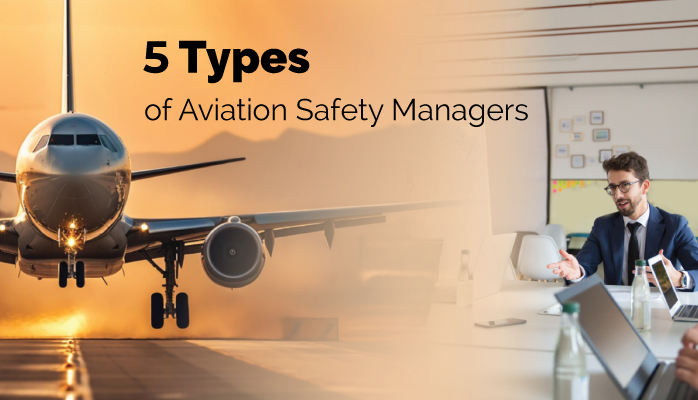Managerial Style Is Critical for Safety Managers

How aviation safety managers conduct oversight is extremely important for the success or failure of the aviation safety management system (SMS).
The particular management style of a safety manager determines how willingly employees will interact with aviation SMS. Will they sincerely accept the demands placed on them by the SMS? Or will they rebel silently and look for ways to subvert the SMS?
What kind of style do you use as a safety manager? If you are not the safety manager, what style does your safety manager practice?
Having an answer to this question allows you to:
- Play on your strengths;
- Become a more effective safety manager;
- Adopt a different style of management that fits in better with your organization; and
- Understand how you interact with employees.
Related Aviation Safety Manager Articles
- What Makes a Good Aviation Safety Manager?
- Career Advice for Aspiring Safety Managers
- How to Tell If Aviation Safety Manager Is Doing Their Job
There is no “best” management style. Every organization has different needs, and different management styles work better in different companies. That being said, certain management styles will be looked at more favorably for developing a quality safety culture.
Below are 5 types of aviation safety managers in risk management programs. If you are a safety manager and are looking to increase your effectiveness, I strongly recommend this article on increasing your managerial power: How Safety Managers Increase Their Power in Aviation SMS.
1 – The Expert Safety Manager
The expert safety manager style is the most feasible of all positive management styles. This style will:
- Make clear straightforward safety decisions;
- Have understandable and good reasons for safety decisions; and
- Will be able to train employees on the most important oversight agency compliance requirements.
These safety managers gain authority and respect by having a broad understanding of:
- SMS requirements,
- Aviation risk management procedures;
- SMS best practices, and
- Safety philosophy.
With the growing body of oversight requirements, this style is a natural one for safety managers to shoot for.
Pros: easiest and most natural way to gain respect and support for the SMS.
Cons: requires very strong knowledge of all aspects of safety, and ongoing learning.
Being an "expert safety manager" requires considerable effort from pilots or other line employees who are suddenly "promoted" to act as the safety manager. It becomes difficult for management to find line employees who have a background in risk management.
These selected employees will be drinking from the fire hose as they learn the processes used by their company to manage risk. Being suddenly assigned as the safety manager in a company with no defined risk management processes will appear even more frightening for these fledgling safety managers.
Related Aviation Risk Management Articles
- What Is the Modern Aviation Risk Management Cycle
- How to Review Your Aviation Safety Risk Management Procedures
- 4 Elements of Safety Risk Management (SRM)
2 – The Respected Manager

The amiable safety manager is the kind of safety manager whose aviation SMS program probably won’t receive an audit finding for employees not knowing the safety manager's name. Amiable safety managers gain respect, trust, and support for the SMS by having positive personal qualities, such as
- Interacts and interfaces with all employees equally;
- Genuinely listens to the safety concerns of employees;
- Gives lots of feedback to reporters on safety issues; and
- Attempts to involve all employees in change management.
Employees with this type of safety manager may follow the SMS purely out of respect and personal loyalty to the safety manager. Such a safety manager tends to have the following traits:
- Charismatic;
- Integrity;
- Rebels against dry, bureaucratic corporate cultures; and
- Able to connect with many different types of people.
This type of safety manager is probably the best type of manager for building a positive safety culture and sustainable risk management program. However, achieving a status of “universally well-liked” is extremely difficult, especially as programs get larger.
Pros: high influential, strong following for safety program.
Cons: very hard to do.
The "respected" safety manager is not always the "most knowledgeable" safety manager. They often get by in life by "who you know" and not always by "what you know." These safety managers have the gift of gab. They can put you at ease with the skill of a politician. This works to their advantage and they have the uncanny ability to "smooth things over," whether it is with a recalcitrant employee or a hard-nosed auditor.
Respected safety managers do not have as much institutional power as the "expert" safety manager; however, this does not mean that the respected safety manager is ineffective. I am always a bit suspicious of these types of people as they remind me of a used car salesman.
On the other hand, these safety managers are more effective in toxic safety cultures where upper-level managers surreptitiously undermine the SMS goals and objectives, such as improving hazard reporting cultures.
Related Aviation Hazard Reporting Culture Articles
- Indicators of Good Hazard Reporting Culture
- Essential KPIs for Poor Hazard Reporting Cultures in Aviation SMS - With Free KPI Resources
- How Aviation Safety Managers Can Improve Safety Reporting Cultures
3 – The Top-Down Manager
The top-down safety manager relies heavily on his/her formal position in the company (i.e., the company's org chart). This type of safety manager may have:
- Another formal position in the company, such as an upper management role; or
- Been given a wide berth of authority by the accountable executive.
At the very least, this type of management style will wield a lot of formal authority.
For organizations that need a strong, archetypal manager to keep the safety program in line, having a high-level manager endorse the program can be a very powerful incentive.
The idea is that with this type of manager, employees can expect rewards/disciplinary action from the safety manager that extends beyond the boundaries of safety (i.e., salary bonuses, promotions, probation). This kind of safety manager can use these incentives to promote the safety program.
Pros: the safety program has a lot of authority and resources to be well organized and efficient.
Cons: the tendency to make safety programs feel like a “management thing.”
The top-down manager uses the same management techniques as "should" the accountable executive. It is "My way or the highway." As long as this manager has sufficient power to back up his demands, this manager will be effective. A problem occurs when this top-down manager is coaching department heads to participate in the SMS. I believe department heads would appreciate an expert power approach over the "positional power" approach.
From my experience, top-down managers are not as flexible as other managerial types when plans don't go their way. When they need to make quick corrections, they struggle to save face and are afraid to admit mistakes.
4 – The Disciplinary Manager

This type of safety manager is generally frowned upon in the aviation safety community. The manager is generally associated with not being aligned with just culture tenets, which is imperative in successfully implementing non-punitive reporting programs.
This type of management style is exactly what it sounds like:
- Relies on disciplinary action to keep safety behavior in check; and
- Very clear rules regarding non-conformance.
This is not sustainable for a long-term management modus operandi. However, some safety programs that are spinning out of control may need some short-term tough love from management. In the face of rebellious employees or strong resistance to change, this type of management style can be effective.
Once again, however, it can also kill efficient SMS implementation that requires a team approach. In general, management should be wary of being identified as a disciplinarian.
Pros: can help in situations of open rebellion or resistance against change management.
Cons: can backfire and hurt safety culture, and not a sustainable management style.
The expert safety manager, as well as the respected safety manager, will not be as effective as the disciplinary safety manager in toxic safety cultures. This becomes especially evident when they need to repair safety cultures that are highly resistant to the change required by the aviation SMS.
I don't recommend that safety managers adopt the disciplinary managerial style as it is a short-term solution. When it comes time to build a "just culture", it will become more difficult to earn employees' trust. Once you lose employees' trust, it is incredibly difficult to get it back. It would be easier to simply move another safety manager into the position instead of the "disciplinary" safety manager to adjust their leadership style.
This is an important point should you attempt to be the disciplinary safety manager. You will be a "fixer" who will probably be replaced once you overcome the resistance to the SMS. Modern safety cultures are not successful in the long run when employees feel threatened by both their actions and possibly their "inaction." As you know, employees have a responsibility to the SMS and in the case of a potential hazard in the workplace, an "inaction" to report the hazard must be dealt with accordingly.
Related Resistance to Change Articles
- 3 Tips to Discover Resistance to Aviation Safety Program
- Overcoming Resistance to Change Through Transparency in Aviation SMS
- Checklist to Quantify Resistance to Your Aviation SMS
5 – The Corporate Safety Manager
The connected "corporate" safety management style is represented by a manager who gains support for the safety program by getting strong support and camaraderie among upper management. This camaraderie can lead to:
- More resources for the SMS;
- Greater responsibility and status for safety manager in the company; and
- More power for the safety manager to make safety decisions.
Getting upper management’s open support is a big deal for any safety program. For an SMS to be implemented in a sustainable way, it needs to be supported EXPLICITLY by upper management. Case in point, we have seen many “fully implemented” safety programs completely collapse when the responsible safety manager leaves the company; in every situation, that safety manager did not have upper management support.
The downside of this management style is the tendency towards corporate cronyism. Moreover, this style of safety management will probably need to “prove” that they are qualified for their job, such as trying to be a safety expert.
Pros: demonstrates that upper management has the full support of the safety program.
Cons: will kill safety program if employees don’t feel that this manager is qualified for the position.
Have You Read
- What Is Safety Culture in the Aviation Industry?
- Six Ways to Improve Safety Culture in Aviation SMS
- How Your Corporate Culture Kills Your Aviation Safety Culture
Wondering what kind of safety manager you are? You might surprise yourself. Take the free quiz below and find out:
Last updated Jan 2025.





